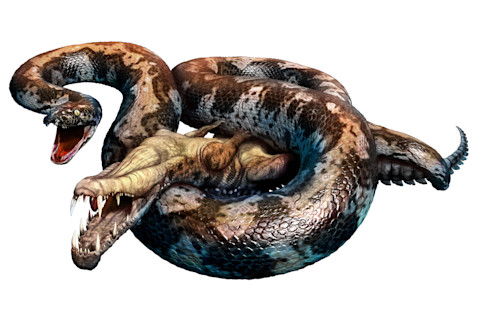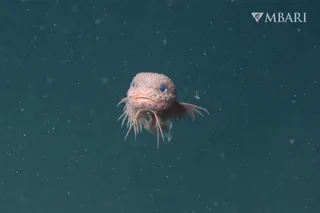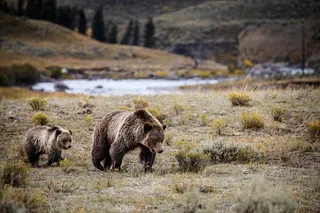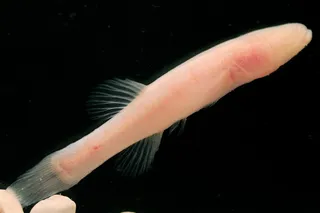Key Takeaways on Titanoboa:
Titanoboa, also known as Titanoboa cerrejonensis, was a real species of snake that lived during the Paleocene around 58 million years to 60 million years ago. It thrived alongside other enormous species like 13-foot crocodiles and 8-foot turtles. The Titanoboa might have looked similar to today's anaconda snake, only much larger.
Titanoboa was about 45 feet on average, which is a third larger than the green anaconda snake, the largest snake that exists today. The weight of Titanoboa was estimated to be around 1,135 kg (2,500 pounds).
The prehistoric snake could easily overpower and consume any number of giant turtles or crocodiles that fell victim to its forceful bite.
It was the first epoch after the age of dinosaurs in a part of the world that had recently recovered from an asteroid blast of epic magnitudes. The blast birthed the tropical rainforests along the equator that exist today. A landscape that was damp and swampy, covered in dense tropical rainforests — ample places for Titanoboa to hide.
The largest snake in the world lived during the Paleocene, around 58 million years to 60 million years ago. It thrived alongside other enormous species like 13-foot crocodiles and 8-foot turtles. They might have looked similar to today, only much larger.
It was the beginning of the age of mammals but they hadn’t yet had time to grow — still small and scattered about trying desperately to escape the wrath of the giant reptiles that were booming in a much warmer climate. Mammals hadn’t yet had the time to diversify and fill all the niches that they do today.
How Big was Titanoboa, Really?

Titanoboa, the largest prehistoric snake. (Credit:Warpaint/Shutterstock)
According to Carlos Jaramillo, a paleontologist at the Smithsonian Tropical Research Institute, Titanoboa was about 45 feet on average, that’s a third larger than the green anaconda, the largest snake that exists today. Jaramillo and his team have built two life size models of the beastly snake to show its sheer size.
“It is only when you are standing next to it that you realize how big it truly was,” he says.
Read More: These 3 Prehistoric Snakes Are the Stuff of Nightmares
Where and How Titanoboa Was Discovered
All of the remains of Titanoboa thus far have been found in a coal mine deep in rainforests of Colombia and were described in research first published in 2009 in the journal Nature.
They speak of a time when a warmer climate birthed enormous species that thrived in the thick humidity.
According to the study, “the great size of this 58 to 60 million-year-old snake indicates a mean annual neotropical temperature of 30–34 °C, substantially higher than previous estimates for that period.”
Since then, the cave has uncovered a number of specimens, showing that they were likely one of the more abundant species living in the habitat.
What Did Titanoboa Hunt?
Too heavy to live in the trees, Titanoboa would have occupied the ground, living close to the water, inactive most of the time and waiting patiently to pounce on any number of giant turtles or crocodiles that fell victim to its forceful bite.
“It would have swallowed them whole and digested them for months, eating three to four times per year,” says Jaramillo.
Huge turtles with broken shells have also been excavated which likely resulted from turtles that were attacked by the giant creature but somehow survived.
Read More: 10 of the World's Deadliest Snakes
Titanoboa’s Climate and Prehistoric World
The Paleocene in this part of the world illustrates an ecosystem that could result from global climate change, where there’s no ice on the poles and temperatures are hotter and more humid in the rainforest. Still, it’s also a difficult place to study, says Jonathan Bloch, a paleontologist at the University of Florida.
“We know very little about it, especially around the equator (where Titanoboa would have lived) because it’s hard to find fossils in a place that has such abundant biodiversity,” says Bloch.
To find fossils you have to also be able to see and explore rocks which hide in the rainforest because they are often covered by vegetation.
“Most of our understanding of the Paleocene comes from higher latitude localities that are in more desert regions,” Bloch says.
Read More: What Are the Most Venomous Sea Snakes in the World?
Did Titanoboa Go Extinct, and Could it Survive Today?
That may be part of the reason that we’re not sure when or why Titanoboa went extinct. It could have just gone extinct as many animals do and given rise to the smaller set of snake species that now call the rainforest home.
As the world cooled off, species got smaller so it begs to question whether a warmer planet could birth the enormous reptiles of yesteryear.
Bloch is skeptical because much of the habitat where Titanoboa and other species thrived in the tropical rainforest has been diminished and deforested by an even greater predator known as humans.
Read More: 5 Of The Biggest Animals To Ever Live On Earth
This article was originally published on Aug. 9, 2023 and has since been updated by the Discover staff.
Article Sources
Our writers at Discovermagazine.com use peer-reviewed studies and high-quality sources for our articles, and our editors review for scientific accuracy and editorial standards. Review the sources used below for this article:
Britannica. Titanoboa















